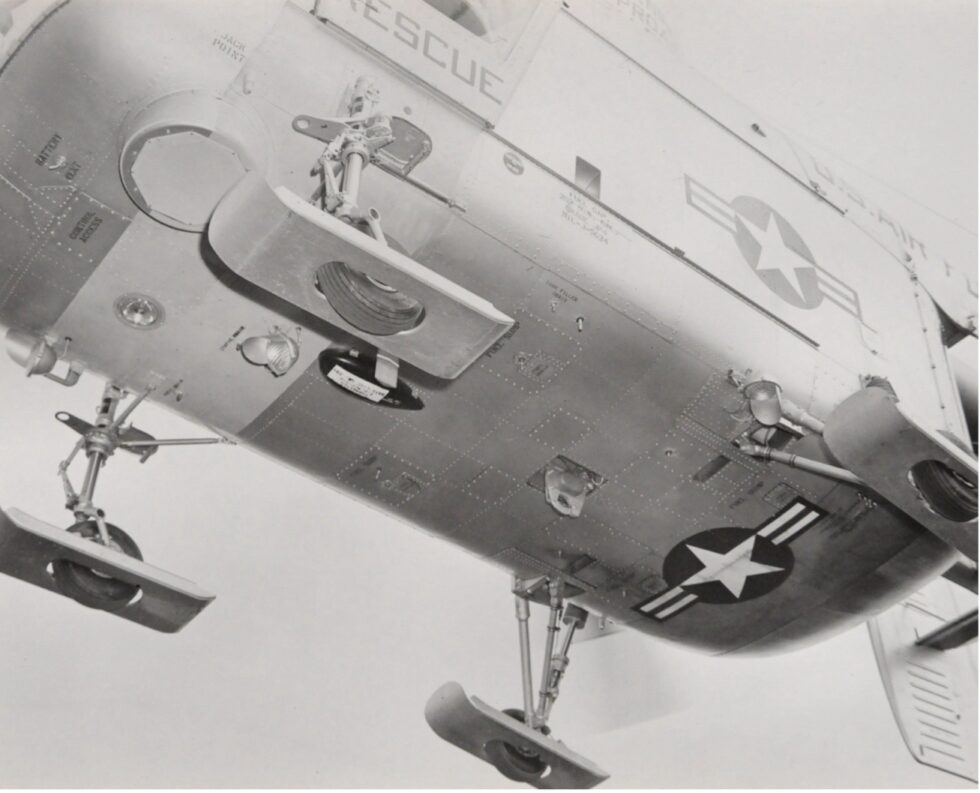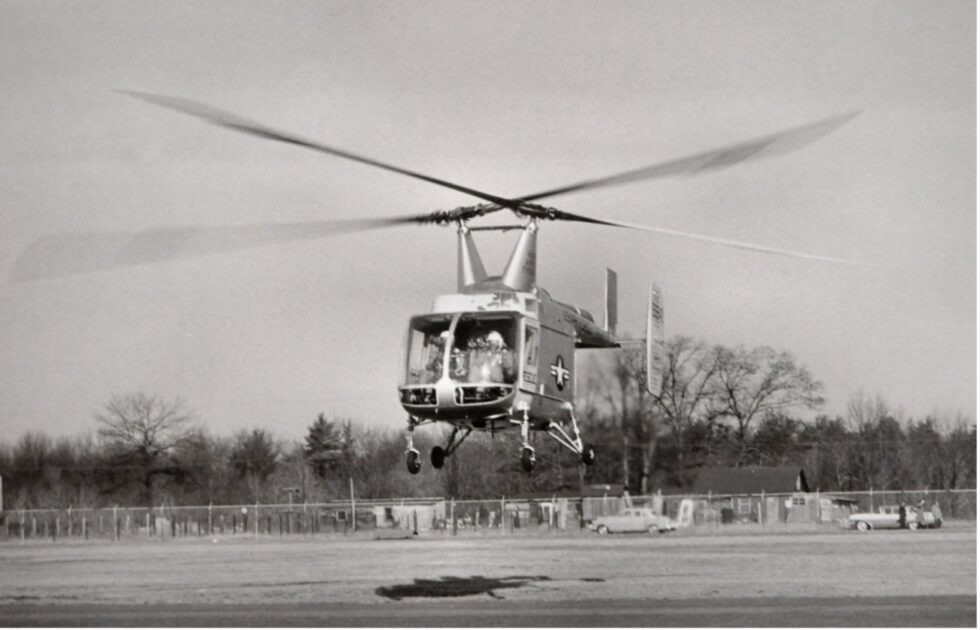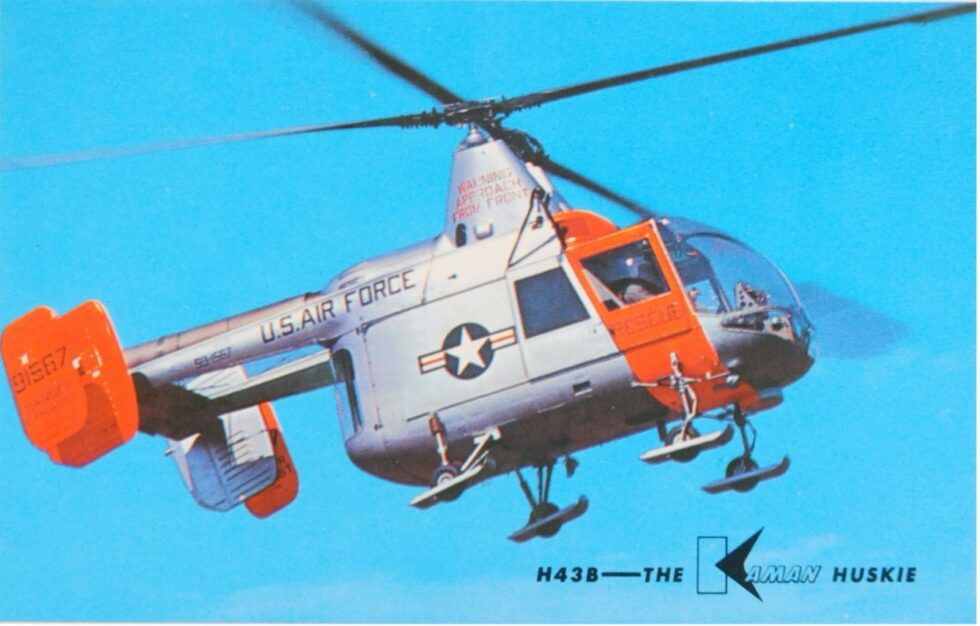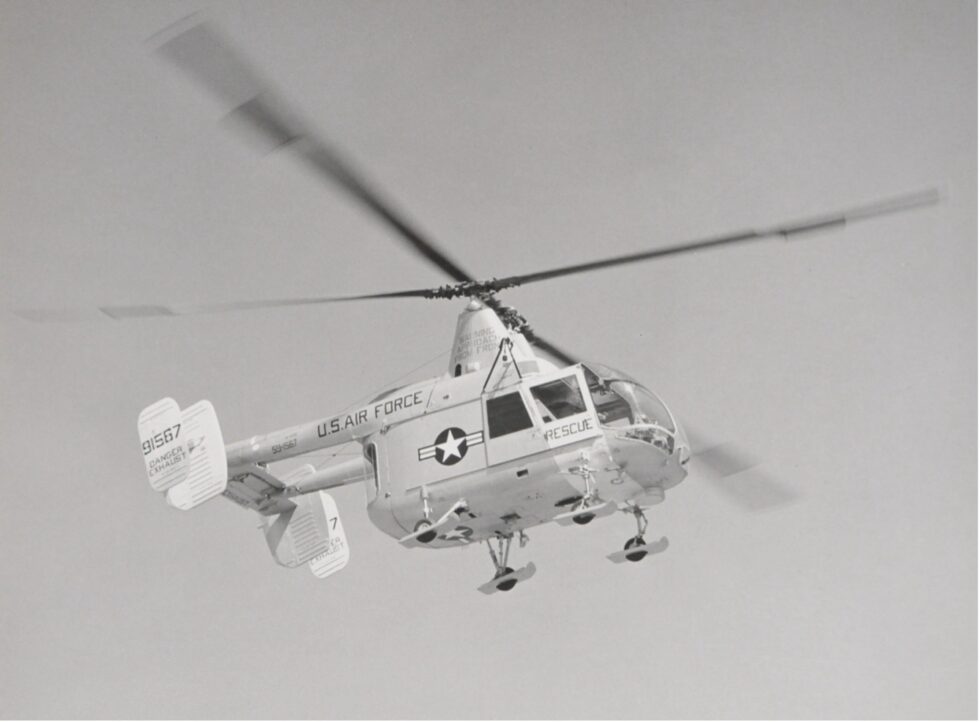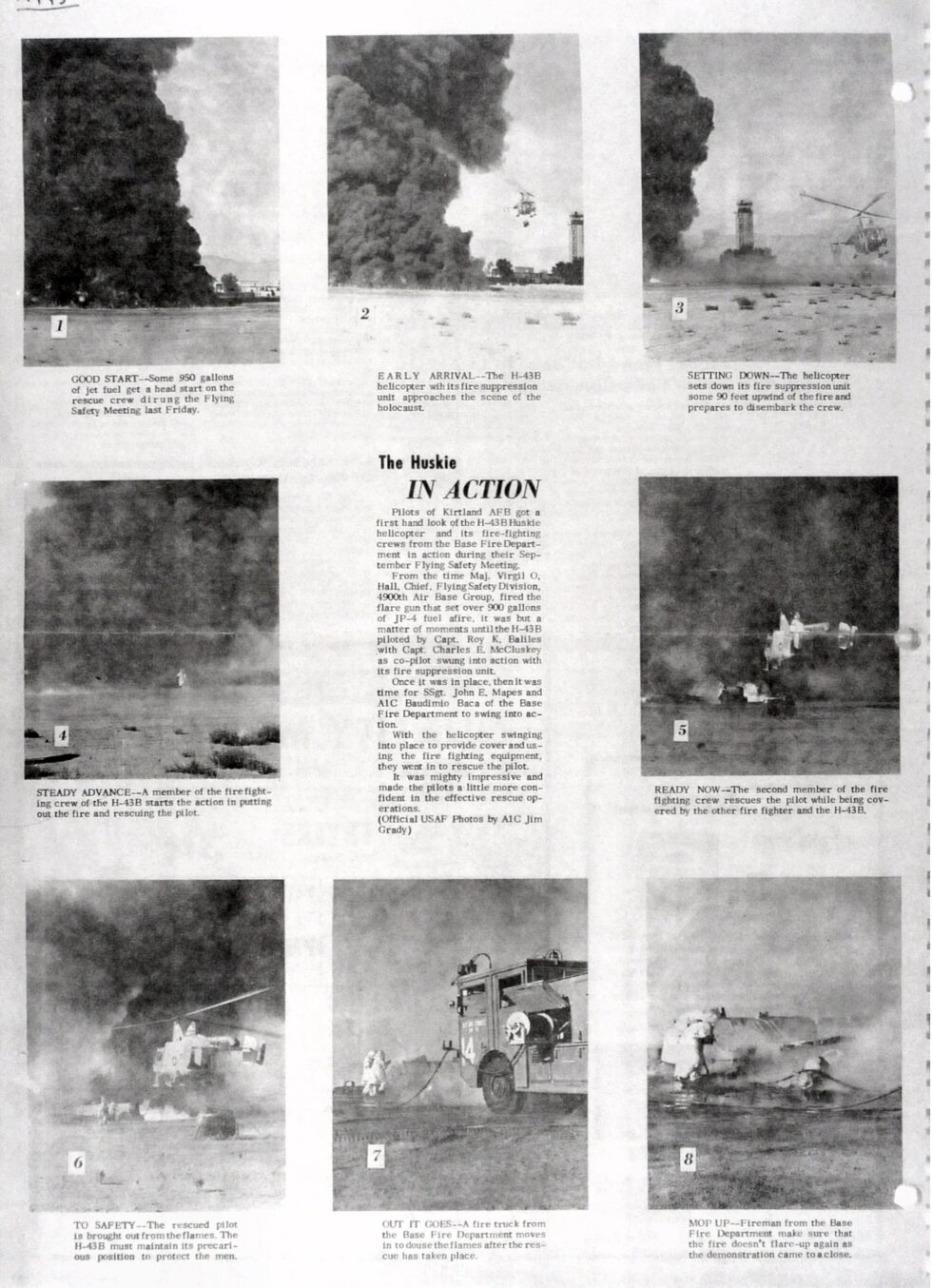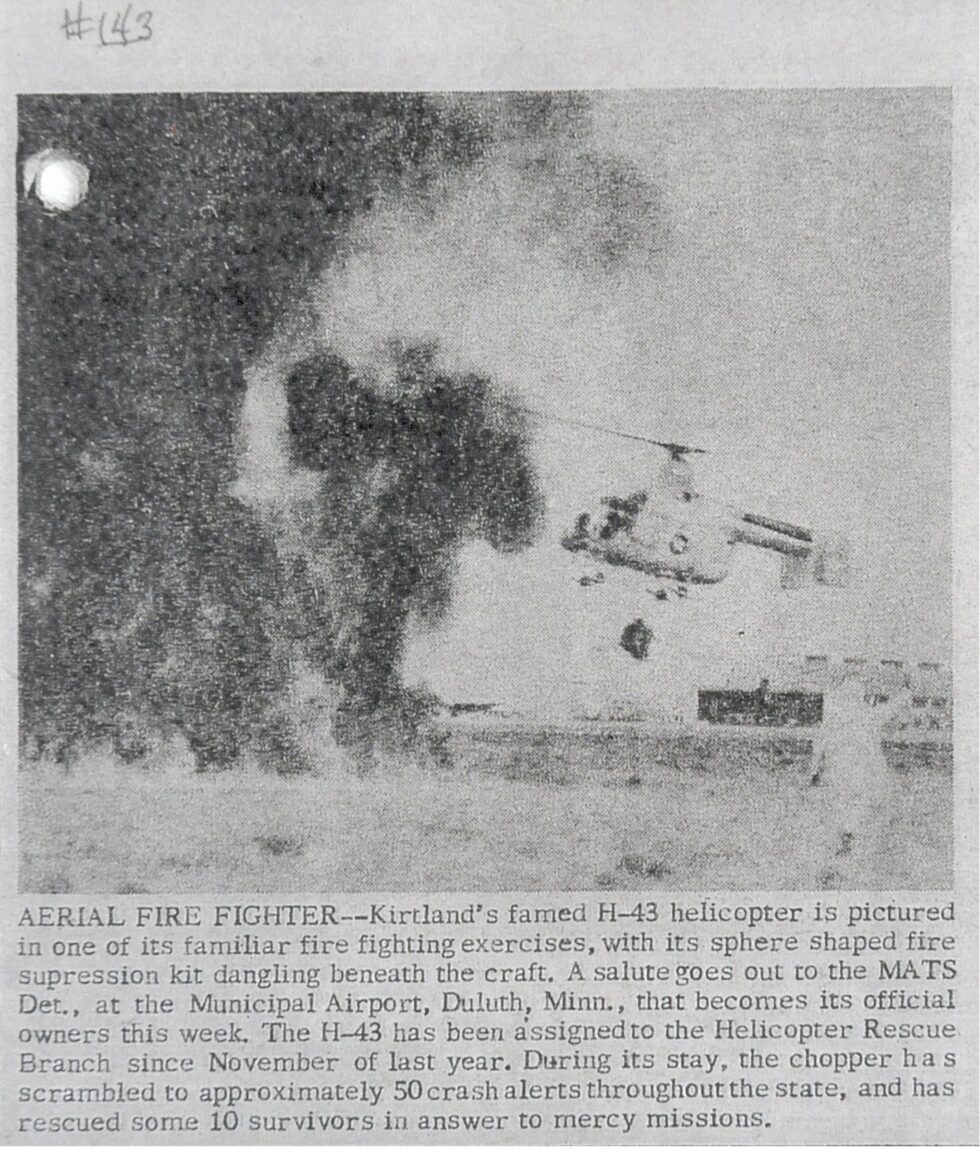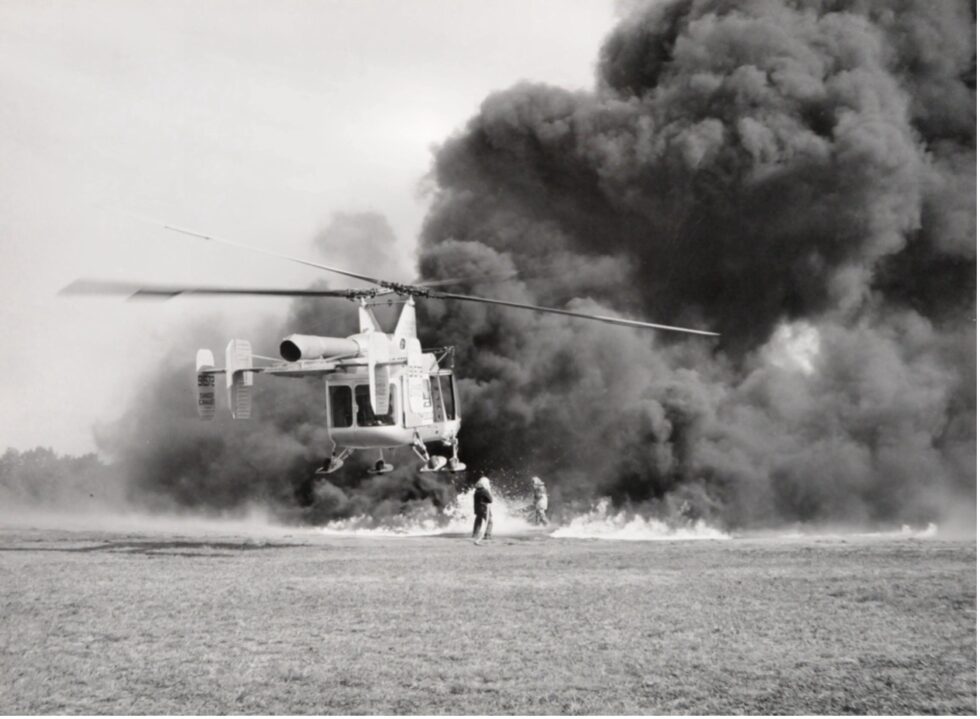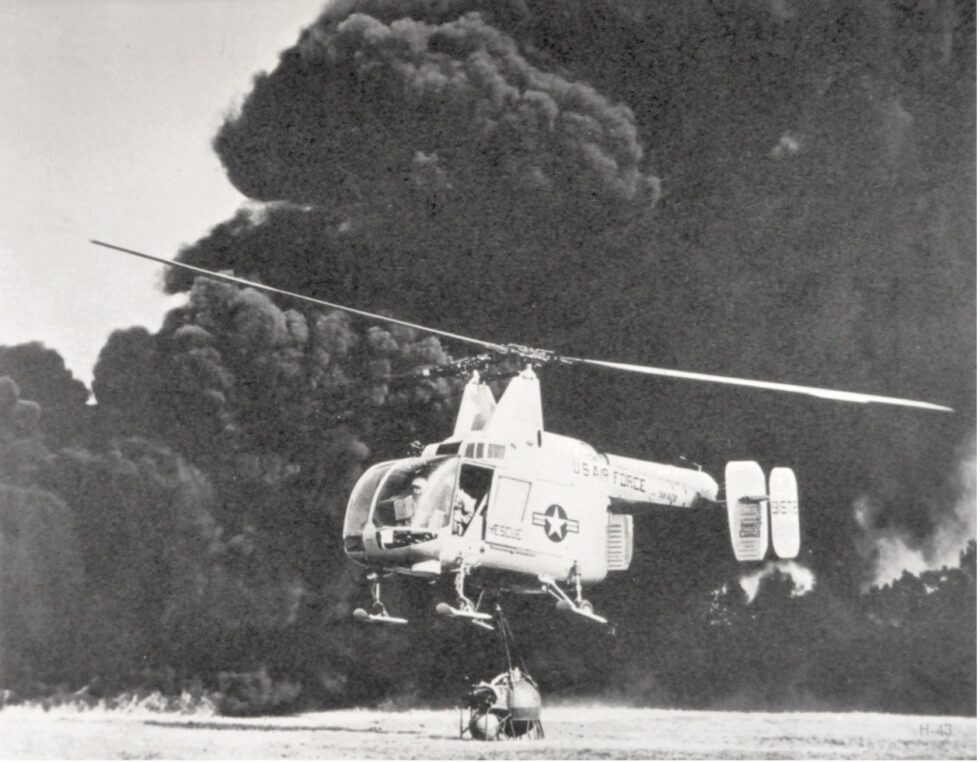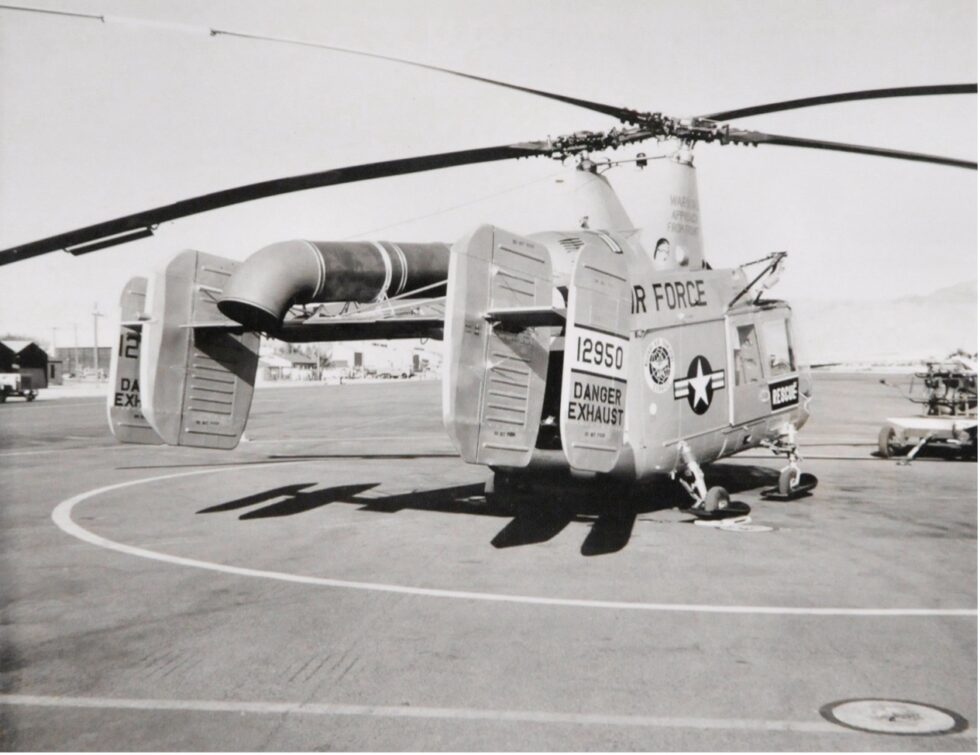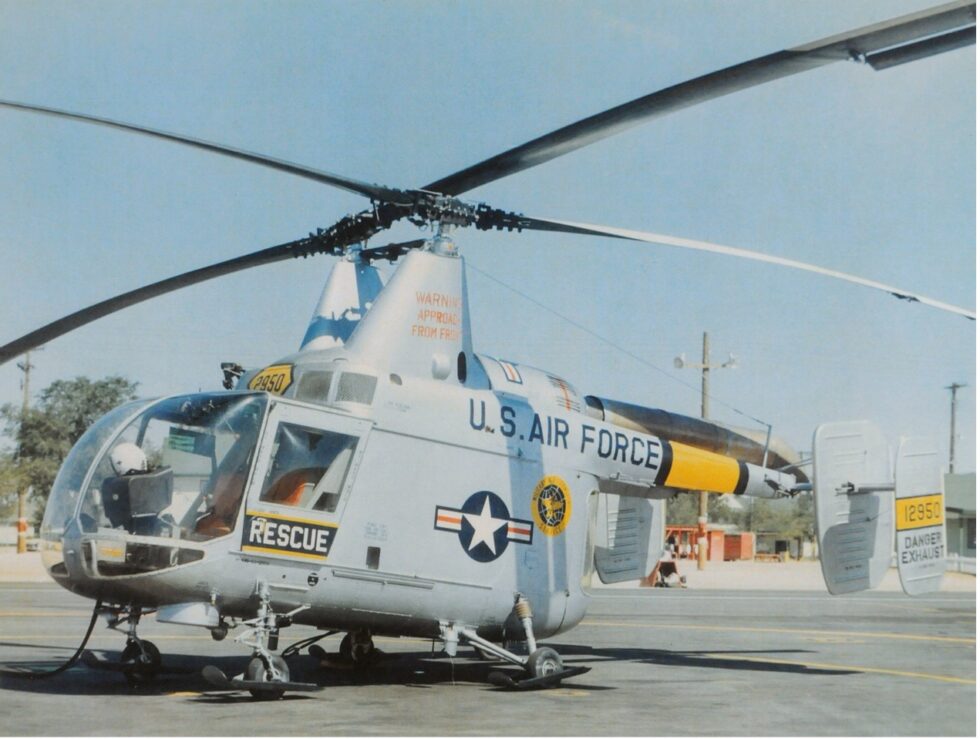US Air Force Kaman HH-43B Huskie
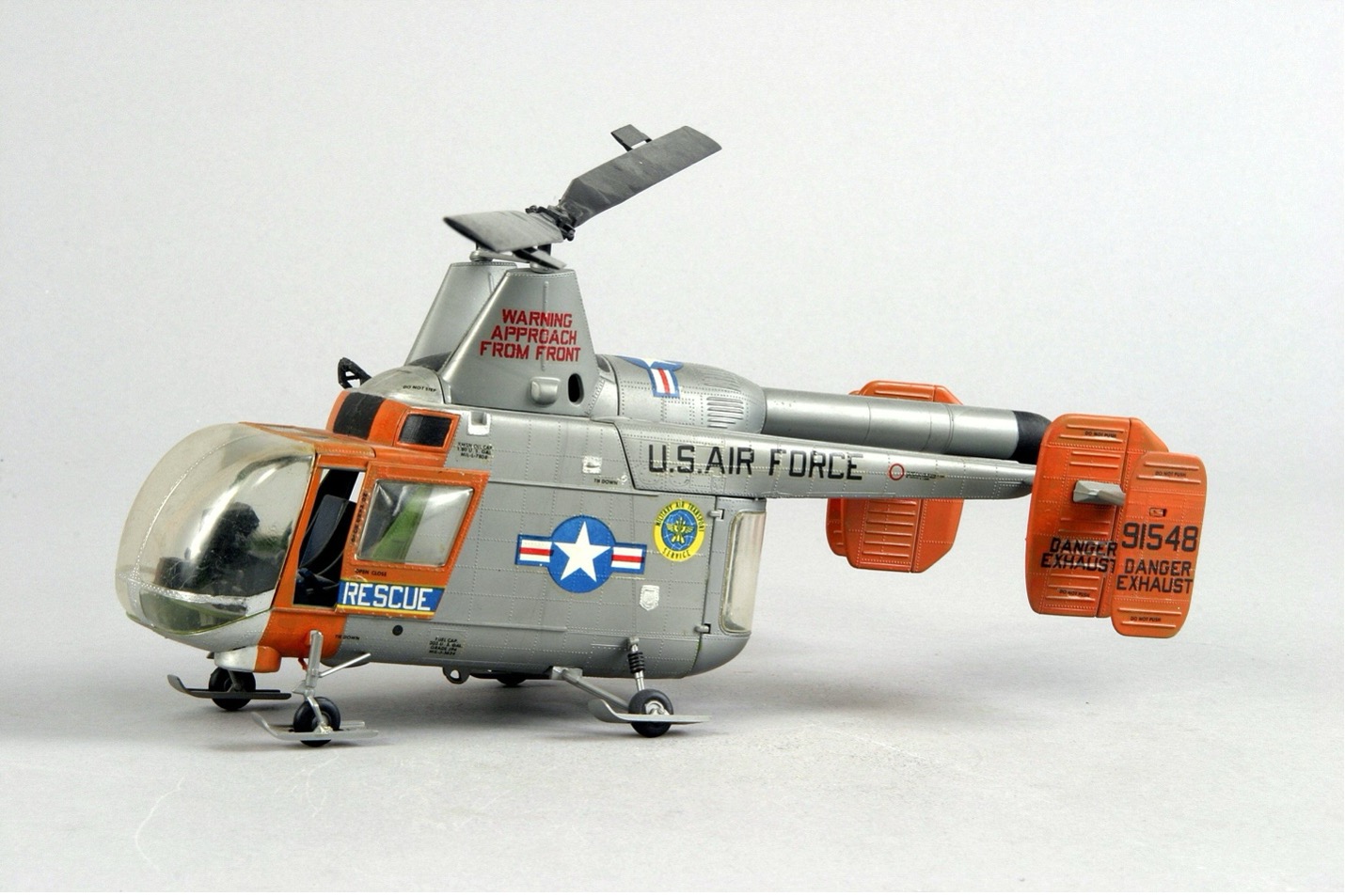
MODEL BY:
L. Smith
Model Scale:
1/32
MODEL ADDED:
10/24/2007
historical significance
First Albuquerque Visit: 1963
Additional Information:
The Kaman HH-43 Huskie is a helicopter developed and produced by the American rotorcraft manufacturer Kaman Aircraft. It is perhaps most distinctive for its use of twin intermeshing rotors, having been largely designed by the German aeronautical engineer Anton Flettner.
First flown on 21 April 1953, the HH-43 went into production and was operated by the United States Air Force (USAF), the United States Navy (USN), and the United States Marine Corps (USMC). Under the aircraft designation system used by the U.S. Navy pre-1962, the Navy and Marine Corps Huskies were originally designated as the HTK, HOK or HUK, for their use as training, observation or utility aircraft, respectively.
The HH-43 Huskie was procured by the USAF and the first model, the H-43A, was delivered to the service in November of 1958. By June of 1959 the first H-43Bs were accepted by the USAF. The USAF used the Huskie to perform local base rescue operations and to fight aircraft fires. To accommodate the aircraft fire capability, the H-43 was commonly outfitted with an airborne fire suppression kit that hung beneath the aircraft developed at Wright-Patterson AFB, The kit weighed only 1,000 pounds yet could expend up to 700 gallons of fire-fighting foam. The Huskies were usually capable of reaching crash sites before the surface vehicles saving time in the rescue operations. During 1962, the USAF opted to change the H-43 designation to HH-43 to reflect the rotorcraft’s role as a rescue vehicle. While the Huskie’s primary mission was for use in aircraft firefighting and rescue operations near air bases, the aircraft was, during the Vietnam War, extensively deployed to the theater of operations. As a search and rescue platform, the Huskie was enhanced with makeshift modifications and given new apparatus to better suit the tropical conditions. The Huskie was retired from American military service in the 1970s after being rendered obsolete by the arrival of larger, more capable rotorcraft.
In 1963 the Kaman HH-43 Huskie became the first helicopter to be used for crash fire fighting and rescue at Kirtland Air Force Base in Albuquerque, New Mexico. The Huskie carried a crew consisting of one pilot and two fire fighters.
An HH-43 Huskie is on static display at Kirtland AFB and is part of the Aerospace Rescue and Recovery Service air park created by the1550th Aircrew Training and Test Wing (1550 ATTW) when they were assigned to Kirtland AFB. Using the last Huskie airframe, the aircraft was restored and mounted on a pedestal on Dec. 12, 1977.
The 1550th Aircrew Training and Test Wing (1550 ATTW) moved to Kirtland AFB on 20 February 1976 and was re-designated the 1550th Combat Crew Training Wing (1550 CCTW) on 15 May 1984. The unit was inactivated on 1 October 1991 and the training mission was transferred to the 542d Crew Training Wing (542 CTW). The 542d was inactivated on 1 April 1994 and the mission was transferred to the current flying mission of Kirtland AFB, the 58th Special Operations Wing (SOW).
In December of 1967, the Huskie flew food and clothing along with feed for cattle to the Navajo Reservation’s in New Mexico and Arizona after a severe blizzard covered the area.
The photo of the rear view of the Huskie shows the large exhaust pipe on the top venting the hot gas out over the tail assembly.
Another photo shows the fire suppression kit carried underneath the Huskie.
Several photos show the helicopter using the downdraft from the blades in pushing the flames away from the fire fighters
GALLERY:
SEARCH OUR DATABASE:

